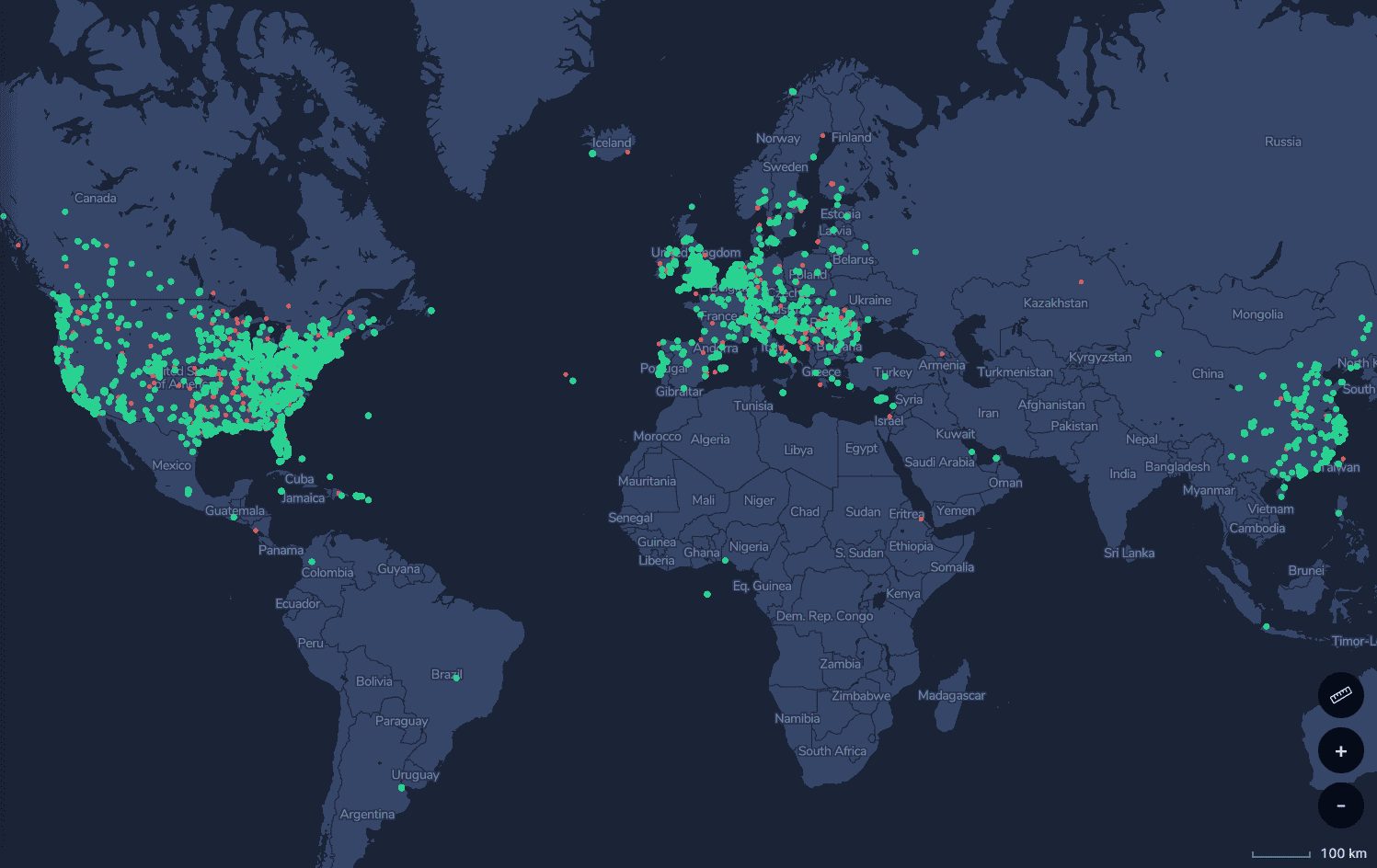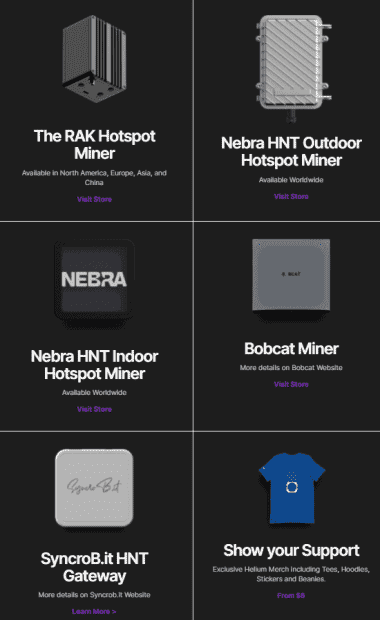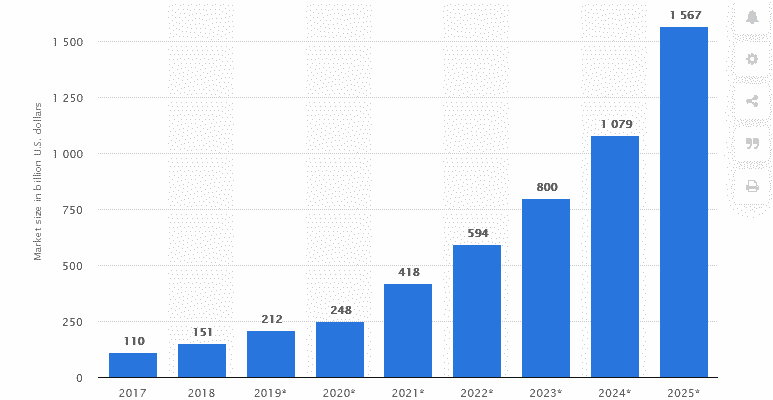Helium (HNT) is currently building the world’s first wireless peer-to-peer network for the Internet of Things (IoT). What does that mean and how can you benefit from it as an investor?
Everyone is talking about the Internet of Things and more and more machines are communicating with each other around the world. Be it the garbage can that asks for emptying by radio, the e-scooter that provides information on the way whether its battery is still working or the air conditioning that automatically adapts to the real weather conditions: Everything should be networked, anywhere, anytime and that as inexpensive as possible, of course.
BTC-ECHO Magazin (5/2021): Social Token – the next big thing?
The industry magazine for Bitcoin and blockchain investors.
Exclusive top topics for a successful investment:
• Investment trend: social tokens
• Coinbase IPO
• The 5 Biggest Bitcoin Crashes
• Market analysis from a professional trader
• Bitcoin mining with hashrate tokens
Order free copy >>
The worldwide turnover in the IoT industry was in Year 2017 $ 110 billion. Forecasts assume that this value will be up 2025 will grow to around $ 1.6 trillion.
Almost all IoT devices need to be constantly connected to the internet. However, current solutions such as cellular communications, WiFi and Bluetooth are suboptimal and the 5G network is also struggling with problems. This is because these technologies are often too expensive, too power hungry or too limited in their range. This is exactly the problem that the crypto project wants helium approach.
What is the helium network?
Helium is a decentralized blockchain network for IoT devices. Amir Haleem, Shawn Fanning and Sean Carey founded the project 2013. The Helium team wants to build a wireless IoT network that will allow devices around the world to wirelessly connect to the Internet without the need for this power-hungry GPS hardware or expensive cellular tariffs.
The HNT token is at the center of Helium’s decentralized blockchain network. This can be used for payments and for governance votes within the network. As a result, Helium has created a two-sided market for providers and users who need the Internet for their IoT devices. The project aims to completely decentralize a market that is currently controlled by monopolies.
Wireless internet connectivity is set to become a competitive fuel and available anywhere in the world at a fraction of the current cost. In this ambitious mission, helium is used by well-known venture capital Companies including Khosla Ventures, FirstMark Capital, GV (formerly Google Ventures), HSB / MunichRe Ventures and others.
How does the helium network work?
Helium uses the existing Internet and builds a decentralized network for IoT devices on it. Everyone has the opportunity to join this network. Users can easily set up a Helium mini router in their own apartment and make the internet available for other IoT devices. Verified IoT devices can then access the connections, for example, or data that is of interest to certain groups can be tracked. So can for example Lime’s e-scooters, which are also Helium’s partners, access these hotspots to save costs.
The entire system behind it is very open, as everyone can participate in this network. Both end users and companies can buy HNT hotspots and operate them independently. In addition, blockchain technology and a new consensus algorithm that Proof of coverage calls, be guaranteed that both the data from providers and users are safe.
In addition, the proof-of-coverage algorithm makes it possible to verify at any time where a hotspot is in the physical world and whether its data can be trusted.
In addition, every helium hotspot has a so-called Long Range Wide Area Network (LoRaWAN), which has a range that is almost 200 times greater than an average WLAN router. The various IoT devices can therefore connect to the networks cost-effectively and without WLAN or SIM card. In addition, the connection via LoRaWAN should be more energy-efficient than via WLAN.
At the beginning of 2021 there were almost 15,000 helium hotspots worldwide. There are now over 32,000 hotspots of helium distributed around the globe.



In the last few months in particular, helium has experienced an enormous hype in the USA, Europe and China, which is also reflected in the HNT price. In early January, HNT was still trading at $ 1.27. A single HNT token now cost $ 17.14.
How do I buy Bitcoin? Guide and provider comparison 2021
We explain quickly and easily how you can buy Bitcoin safely and cheaply and what you should pay attention to!
To the guide >>
How to earn HNT tokens
The helium network rewards all those who provide Internet for IoT devices via a so-called helium hotspot with HNT tokens. These hotspots are physical devices that are required for mining and transferring data on the HNT network. But why is the HNT token valuable at all?
The HNT token is required to carry out transactions in the helium network. In addition, companies that want to use the data from hotspots must buy HNT and then destroy it. This reduces the overall offer of all HNTs and in return the companies receive so-called data credits. They can use these to pay for access to data.
There are currently five different hotspot models available in the Helium Store listed and priced between $ 410 and $ 577. These hotspots are available as both indoor and outdoor models.



However, the models are so popular at the moment that manufacturers have been unable to keep pace with demand since the beginning of April. It can therefore take three to four months to get your helium hotspot delivered. If you don’t want to wait that long, you can be lucky Ebay to attempt. However, the various devices there sell for several thousand euros.
Helium mining can be extremely profitable
Making money from helium hotspots can be extremely profitable. How much you can earn, however, depends on where you position your helium hotspot. On the one hand, it is important to be within reach of other hotspots.
On the other hand, it is also important not to be surrounded by too many hotspots. Compared to the USA, there is still extreme potential for growth, especially in Germany and the rest of Europe.
Currently, the best places are urban areas. Each hotspot has a range of approx. 15 kilometers. However, this can be expanded by placing the hotspot higher or by installing an antenna. Still, it doesn’t hurt to be the first in your area to set up a hotspot. That’s because you have your earnings over you extremely short period of timewhen more hotspots are added in the same area.
Helium mining can currently be extremely profitable, especially in major German cities such as Berlin, Frankfurt or Munich.
A helium miner in Berlin Mitte can earn between 2,000 and 3,000 US dollars per month for its owner to generate. With a hotspot in such a position, it would currently be possible to get your entire investment back within just one month. If you want to find out how profitable helium mining can be in the respective regions, you should take a look at the Helium Explorer Card throw. On this map you can see in which areas there are already helium hotspots and, after selecting the individual hotspot, you can view details about its income.
Conclusion
Helium has grown very slowly since its start, but now the network effect seems to be causing the project to grow exponentially. From around 7,000 hotspots in August 2020, the helium network had grown to over 30,000 hotspots by the beginning of May 2021. Although the helium network is already relatively widespread in the USA, there is currently still an enormous amount of potential for growth in Europe and Asia.
Helium’s technology appears to be working, and it is likely that the number of hotspots will continue to grow massively over the next few months. The network effect of the project is enormous and even if the HNT rate falls by 80 percent, it would currently still be extremely profitable to mine helium in major German cities. Overall, helium is therefore a project that still has a lot of potential and could significantly help the growth of the IoT industry worldwide.
Nevertheless, it must be noted that the bottlenecks at the hotspot suppliers and the resulting sharp rise in acquisition costs are currently categorically excluding many small investors. In addition, it is still unclear how secure the helium hotspot network really is. Likewise, many questions about data protection are still open and the enormously high HNT rewards that are currently being paid out to hotspot owners are not sustainable in the long term.
Social tokens – the next big thing?
Investment trend: social tokens
Find out more in the leading magazine for blockchain and digital currencies
(Print and digital)
☑ 1st edition free of charge
☑ Over 70 pages of crypto insights every month
☑ Never miss out on investment opportunities
☑ Free postage to your home
To the crypto compass magazine
